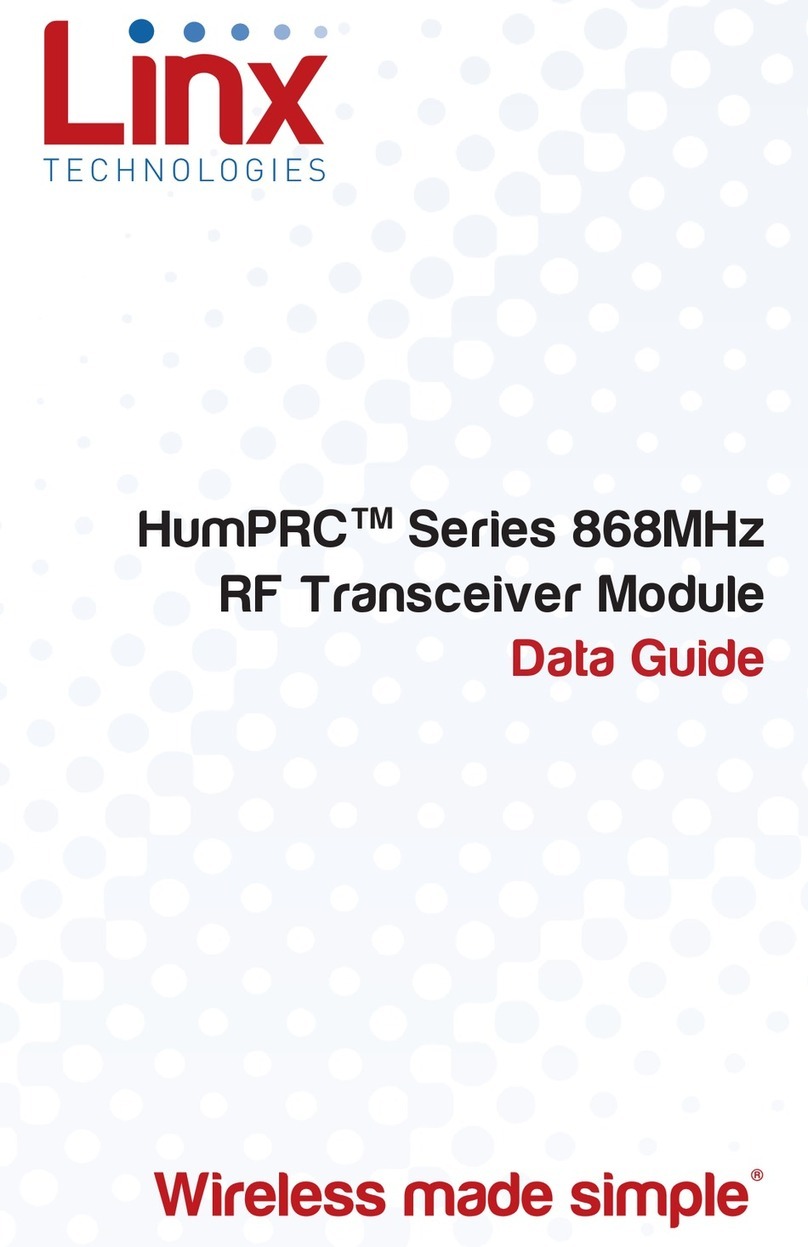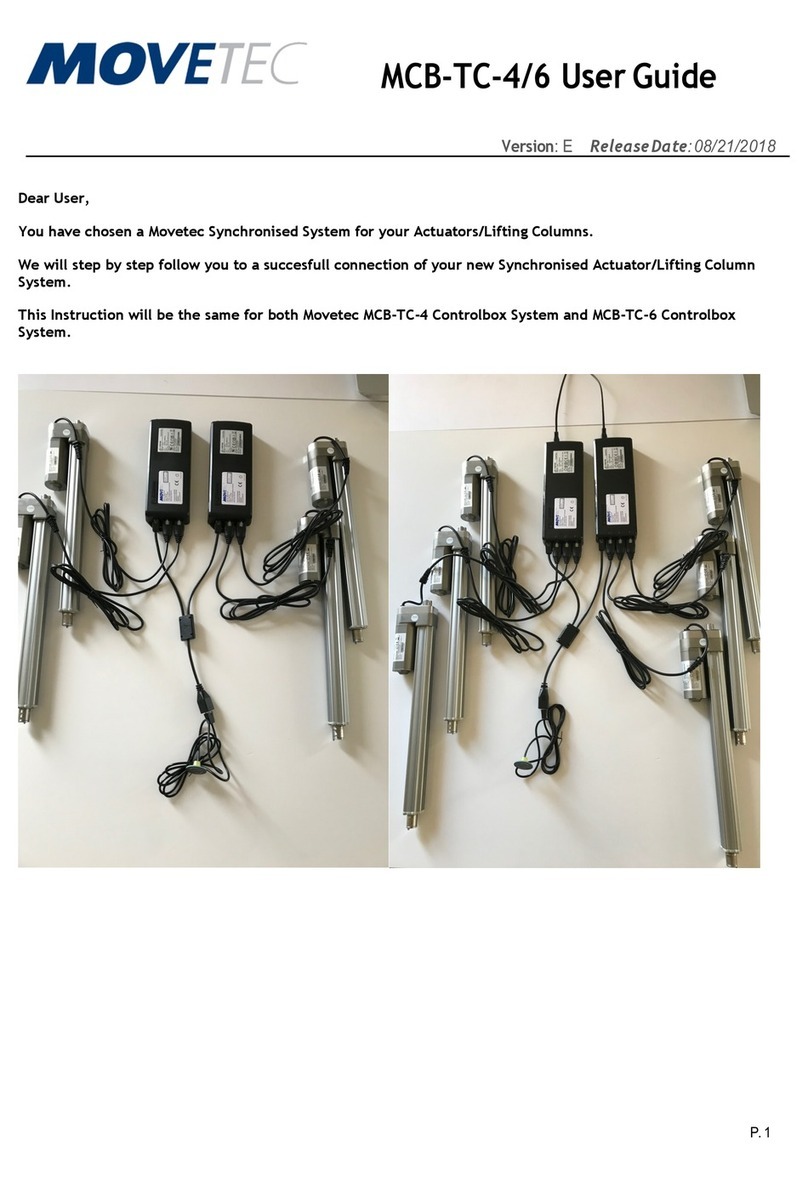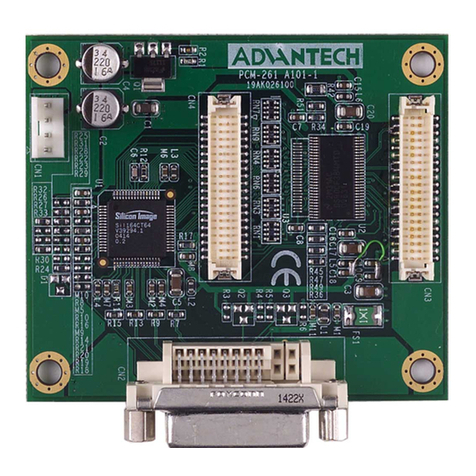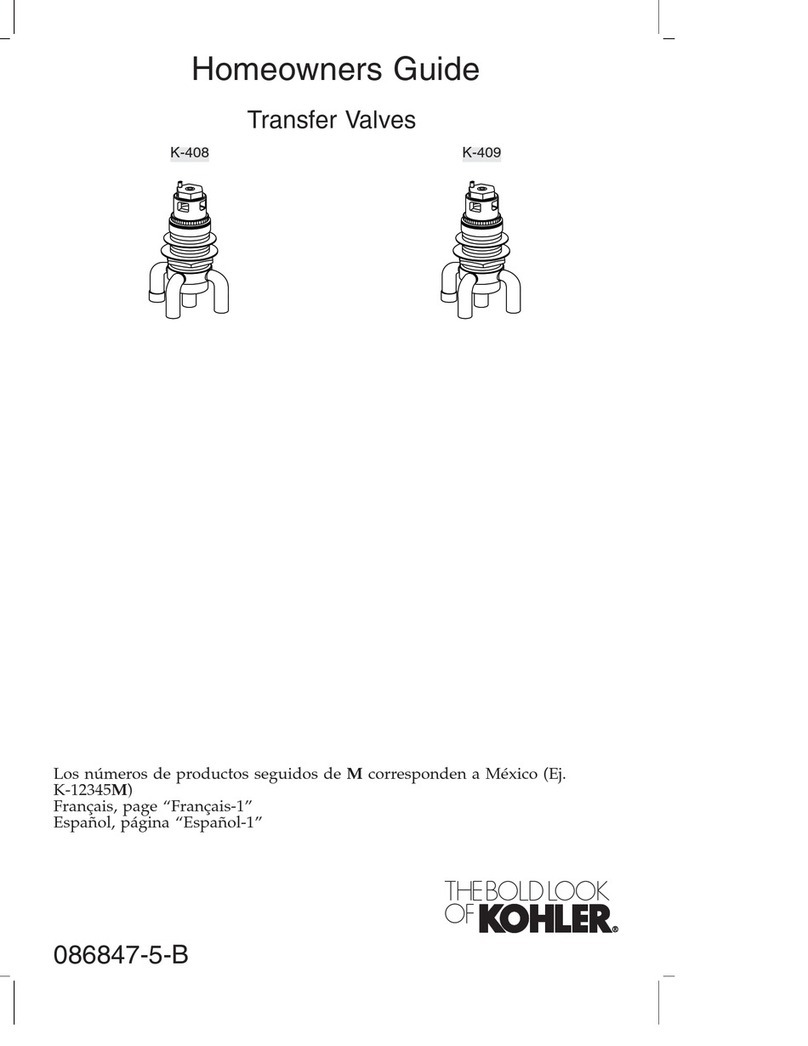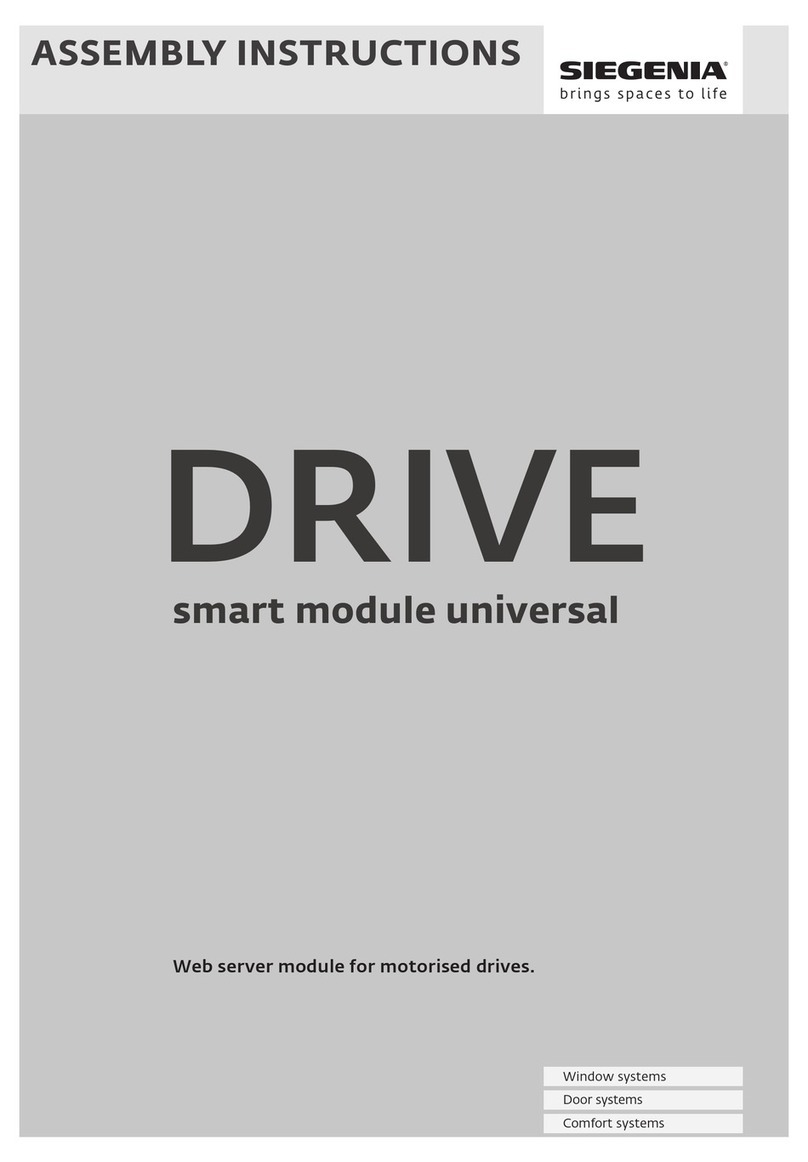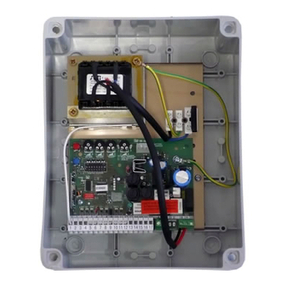Linx QS Series Instruction Manual

QS Series
USB Module
Data Guide

Warning: Some customers may want Linx radio frequency (“RF”)
products to control machinery or devices remotely, including machinery
or devices that can cause death, bodily injuries, and/or property
damage if improperly or inadvertently triggered, particularly in industrial
settings or other applications implicating life-safety concerns (“Life and
Property Safety Situations”).
NO OEM LINX REMOTE CONTROL OR FUNCTION MODULE
SHOULD EVER BE USED IN LIFE AND PROPERTY SAFETY
SITUATIONS. No OEM Linx Remote Control or Function Module
should be modified for Life and Property Safety Situations. Such
modification cannot provide sufficient safety and will void the product’s
regulatory certification and warranty.
Customers may use our (non-Function) Modules, Antenna and
Connectors as part of other systems in Life Safety Situations, but
only with necessary and industry appropriate redundancies and
in compliance with applicable safety standards, including without
limitation, ANSI and NFPA standards. It is solely the responsibility
of any Linx customer who uses one or more of these products to
incorporate appropriate redundancies and safety standards for the Life
and Property Safety Situation application.
Do not use this or any Linx product to trigger an action directly
from the data line or RSSI lines without a protocol or encoder/
decoder to validate the data. Without validation, any signal from
another unrelated transmitter in the environment received by the
module could inadvertently trigger the action.
All RF products are susceptible to RF interference that can prevent
communication. RF products without frequency agility or hopping
implemented are more subject to interference. This module does not
have a frequency hopping protocol built in.
Do not use any Linx product over the limits in this data guide.
Excessive voltage or extended operation at the maximum voltage could
cause product failure. Exceeding the reflow temperature profile could
cause product failure which is not immediately evident.
Do not make any physical or electrical modifications to any Linx
product. This will void the warranty and regulatory and UL certifications
and may cause product failure which is not immediately evident.
!Table of Contents
1 Description
1 Features
1 Applications
2 Ordering Information
2 Absolute Maximum Ratings
3 Electrical Specications
4 Pin Assignments
4 Pin Descriptions
5 Module Description
5 Theory of Operation
7 Installing the Drivers
8 Changing the Device Descriptions
8 Software Considerations
9 Serial Number Considerations
10 Power Supply Guidelines
10 Pad Layout
11 Helpful Application Notes from Linx
12 Typical Applications
14 Production Guidelines
14 Hand Assembly
14 Automated Assembly

– –
1
Description
The Linx QS Series USB module allows the
rapid addition of USB to virtually any device.
Housed in a compact SMD package, the
QS module provides a complete solution for
converting between USB and CMOS / TTL logic
level serial sources. The module can be directly
connected to virtually any serial device including
microprocessors, RS-232 / RS-485 level
converters or Linx wireless RF modules. The QS
module is completely self contained so it requires
no external components except a USB jack and includes all necessary
firmware and drivers, freeing the designer from complicated programming.
Power can be supplied externally or from the USB bus. Both USB 1.1 and
USB 2.0 are supported at data rates up to 3Mbps.
Features
• Single chip USB-to-
asynchronous serial data
conversion
• Low cost
• 3Mbps baud rate
• Supports low-speed USB
• Full handshaking support for
RS-232 and RS-485
• Bus or self-powered
• Compact surface-mount package
• VID, PID, serial number and
descriptors programmed via USB
• No external components needed
except a USB jack
• Drivers and firmware included
• Supports Windows 98 / 2000 /
XP / Vista / Windows 7 and 10
• USB 1.1 and 2.0 compatible
Applications
• Interface / upgrade legacy
peripherals
• Interface microcontrollers & USB
• USB to RS-232 / RS-485
converters
• Interfacing RF modules to USB
• USB smart card readers
• USB modems
• Robotics
• USB instrumentation
• USB game controllers
• USB-to-serial converter cables
QS Series USB Module
Data Guide
Figure 1: Package Dimensions
Revised 2/3/2020
0.125"
0.630"
0.812"
LOT QUxxxx
SDM-USB-QS1-S

– – – –
2 3
QS Series USB Module Specifications
Parameter Symbol Min. Typ. Max. Units Notes
Power Supply
Operating Voltage VCC 4.35 5.0 5.25 VDC
Supply Current lCC 26.0 28.0 mA
UART SECTION
Data Rate 0.0003 3.0 Mbps
Data Output:
Logic Low VOL 0.3 0.4 0.6 VDC
Logic High VOH 3.2 4.1 4.9 VDC
EEPROM Size 1,024 Bits
USB Section
Data Output:
Logic Low UVOL 0.0 0.3 VDC
Logic High UVOH 2.8 3.6 VDC
Single-Ended RX Threshold UVSE 0.8 2.0 VDC
Differential Common Mode UCOM 0.8 2.5 VDC
Differential Input Sensitivity UVDIF 0.2 VDC
Driver Output Impedance UDRVZ 29 44 Ω
Environmental
Operating Temperature Range 0.0 +70 °C
Electrical SpecicationsOrdering Information
Ordering Information
Part Number Description
SDM-USB-QS-S QS Series USB Module
MDEV-USB-QS QS Series Master Development Kit
Figure 2: Ordering Information
Absolute Maximum Ratings
Figure 3: Absolute Maximum Ratings
Figure 4: Electrical Specifications
Absolute Maximum Ratings
Supply Voltage Vcc −0.5 to +6.0 VDC
Any Input or Output Pin −0.5 to VCC + 0.5 VDC
Max. Current Sourced by Output Pins 24 mA
Operating Temperature 0 to +70 ºC
Storage Temperature −65 to +150 ºC
Exceeding any of the limits of this section may lead to permanent damage to the device.
Furthermore, extended operation at these maximum ratings may reduce the life of this
device.
Warning: This product incorporates numerous static-sensitive
components. Always wear an ESD wrist strap and observe proper ESD
handling procedures when working with this device. Failure to observe
this precaution may result in module damage or failure.

– – – –
4 5
Pin Assignments
Figure 5: SDM-USB-QS-S Pinout (Top View)
Pin Descriptions
Pin Number Name Description
1 USBDP USB data signal plus
2 USBDM USB data signal minus
3 GND Ground supply
4 VCC Positive power supply
5 SUSP_IND
Goes low during USB Suspend Mode. This pin can be
used to power down external logic when the host puts
the USB bus into suspend mode.
6 RX_IND This line will pulse low when receiving data from the USB
bus. This allows for the connection of a LED indicator.
7 TX_IND This line will pulse low when transmitting data on the USB
bus. This allows for the connection of a LED indicator.
8 485_TX Transmit enable line for RS-485 applications.
9 DTR Data Terminal Ready control / handshake output
10 CTS Clear to Send control / handshake input
11 RTS Request To Send / handshake output
12 DATA_OUT Transmit asynchronous data output
13 DATA_IN Receive asynchronous data input
14 DSR Data Set Ready control / handshake input
15 DCD Data Carrier Detect control / input
16 RI Ring Indicator control input
Figure 6: Pin Descriptions
USBDP
USBDM
GNDDSR
DATA_IN
DATA_OUT
RTS
CTS
DTR
TX_IND
VCC
SUSP_IND
RX_IND
485_TX
RI
DCD
1
2
3
4
5
6
7
89
10
11
12
13
14
15
16
Pin Descriptions
Module Description
The Linx SDM-USB-QS module converts USB signals from a host, such
as a PC or hub, into TTL logic level signals. This enables the module to
be connected directly to microcontrollers (or Linx RF modules for wireless
applications) or to RS-232 or RS-485 level converters for communication
with legacy devices. The module handles all complicated enumeration and
bus communication processes, freeing the designer to focus on handling
the data. All necessary firmware is included in the module and the device
descriptors can easily be changed to customize the module.
The host application software can access the USB device by simple,
custom functions or by standard Windows Win32 API calls. In addition,
Virtual COM Port drivers are available that make the USB module appear to
the PC as a COM port, without the need for additional system resources,
such as an IRQ or address. This allows the designer to program the
application software to use standard serial or parallel ports and then simply
select the port that represents the USB module. The drivers automatically
direct the data to the USB bus and the device.
Theory of Operation
Figure 7 shows a block diagram of the QS module.
The USB transceiver block provides the physical interface for the USB
signalling.
Serial Interface
Engine (SIE)
USB Protocol
Engine
UART FIFO
Controller
USB
Transceiver
RX Buffer
384 Bytes
TX Buffer
128 Bytes
USB DPLL
Clock
SUSP_IND
USBDP
USBDM
DATA_OU
T
DATA_IN
RTS
CTS
DTR
DSR
DCD
RI
485_TX
TX_IND
RX_IND
UART
VCC
GND
Figure 7: SDM-USB-QS-S Block Diagram

– – – –
6 7
The USB DPLL locks onto the NRZ data and provides separate recovered
clock and data signals to the Serial Interface Engine (SIE).
The SIE performs the parallel-to-serial and serial-to-parallel conversion,
bitstuffing / un-stuffing, and CRC calculations on the USB data.
The USB Protocol Engine manages the data from the USB control
endpoint, the USB protocol requests from the USB host controller, and the
commands for controlling the functional parameters of the UART.
Data from the USB data out endpoint is stored in the TX buffer and
removed from the buffer to the UART transmit register under control of the
UART FIFO controller.
Data from the UART receive register is stored in the RX buffer prior to being
removed by the SIE on a USB request for data from the device data in
endpoint.
The UART FIFO controller handles the transfer of data between the RX and
TX buffers and the UART transmit and receive registers.
The UART performs asynchronous 7 / 8 bit parallel-to-serial and serial-to-
parallel conversion of the data on the RS-232 interface. Control signals
supported by the UART include RTS, CTS, DSR, DTR, DCD, and RI. The
UART provides a transmitter-enable control signal (485_TX) to assist with
interfacing to RS-485 transceivers. The UART supports RTS / CTS, DSR /
DTR and X-On / X-Off handshaking options. Handshaking, where required,
is handled in hardware to ensure fast response times. The UART also
supports the RS-232 BREAK setting and detection conditions.
Installing the Drivers
The drivers for the USB module are included with the module’s
development system or may be downloaded from the Linx website at
www.linxtechnologies.com. These drivers should be downloaded onto the
hard drive of a PC or onto a disk. When the module is attached to the PC
for the first time, Windows automatically detects the device and searches
for the best driver. Windows prompts for the location of the drivers, so
browse to the folder or the disk, click Next, and Windows does the rest.
Windows XP may return an error window as shown in Figure 8.
This window is simply a warning that the driver has not gone through
Microsoft’s certification process and could potentially pose a problem for
the system. The drivers provided for the QS module are Microsoft Certified
and should not pose any problems unless modified by the user. Click the
Continue Anyway button to finish the installation process.
Figure 8: Windows XP Driver Error Window

– – – –
8 9
Changing the Device Descriptions
The QS can be customized to display the product’s name, manufacturer
name, and to use different Product Identifiers (PID) and Vendor Identifiers
(VID). This allows an end user to see the final product’s name in their
Windows Device Manager and when the hardware is first loaded. The
PID and VID are set by the USB Implementers Forum and should not be
changed unless the final product has gone through the certification process
and received its own unique IDs.
The Manufacturer, Description, and Serial Number strings can all be
modified using the QS EEPROM Programmer software, which can be
downloaded from the Linx web site. This easy-to-use software reprograms
the module via the USB bus and can be done during production testing.
Once the module is reprogrammed, some modifications to the driver files
may be necessary. If a VID and PID other than the default Linx numbers
are used, these numbers need to be added to the files. This requires
modifying several lines in the .inf files and is described in detail in the QS
Series Programmer’s Guide. Modifying the name displayed by the Windows
Device Manager requires changing only one line, also described in the
Programmer’s Guide.
Software Considerations
The PC needs a set of drivers that tell it how to communicate with the QS
module. The CDM drivers for the QS Series module install two different
drivers at the same time. The first driver makes the QS appear as a COM
port on the host PC. This allows the application to use standard writes and
reads to a serial port, and the drivers redirect data to the USB module.
The second driver supports a series of functions that allow direct control
of the QS module. These functions are described in Application Note
AN-00200: SDM-USB-QS Programmer's Guide, where examples are given
in both Visual Basic and C. The Programmer's Guide can be downloaded
from the Application Notes page in the Support section of the Linx website.
Sample software is available on the Software page in the Support section.
In addition to the Programmer's Guide, the QS Series Master Development
System (MDEV-USB-QS) includes example software and sample system
source code. This source code provides the driver function declarations,
examples of how to use the functions in a program, and other code that
may be of use.
Serial Number Considerations
The VID and PID are used by Windows to determine what devices are
attached to the bus and which drivers to load in order to communicate
with each device. A unique serial number is used to distinguish between
different devices of the same type so that the operating system can be
sure that it is communicating with the correct one. Windows views every
different combination of VID, PID and serial number as a new device and
starts the “Found New Hardware” wizard for each one. This is an issue in
a mass production environment, so the QS modules are shipped with the
“Enable Serial Number” option disabled in the EEPROM. This prevents the
serial number from being used during ennumeration.
With the serial number disabled, Windows tracks each device by
connection and assign a USB port to a particular device. If the device is
moved to another port, it needs to be reinstalled. The problem that arises
is that the device is installed on the same PC multiple times, once for each
USB port into which it has been plugged.
It is recommended to set the “Enable Serial Number” option and to use
a unique serial number as a part of the product's final testing procedure.
The QS EEPROM Programmer can be downloaded from the Linx website
and the EEPROM programming functions can be found in Application Note
AN-00200. These can be used as a part of an automated test program at
the end of the production line to program custom descriptors and a unique
serial number into the product.
Note: Avoid using the same serial number for multiple devices, as
it can cause a conflict in the operating system. Windows XP has a
particular problem with this and may crash if it sees two of the same
type of device with the same serial number on the same bus.

– – – –
10 11
Helpful Application Notes from Linx
It is not the intention of this manual to address in depth many of the issues
that should be considered to ensure that the modules function correctly
and deliver the maximum possible performance. We recommend reading
the application notes listed in Figure 11 which address in depth key areas
of RF design and application of Linx products. These applications notes are
available online at www.linxtechnologies.com or by contacting Linx.
Power Supply Guidelines
The USB module can be powered in two ways: from the USB bus or from
an external source. If necessary, a voltage regulator can be used to supply
a clean 5V as the external source, or the VCC pin can be connected to the
bus power pin of the USB connector. Using the bus to power the module
is an advantage because the module then uses power from the host
rather than from the peripheral. This is especially helpful if the peripheral is
battery-powered. Figure 9 shows the schematic powering from the bus.
The USB specification has strict allowances for using power from the bus.
A device is allowed to use 100mA before enumeration, 500mA during
normal operation, and 500mA in suspend mode. A descriptor stored in the
EEPROM tells the host how much current the device will pull from the bus
so that the host can allocate the appropriate power. The modules come
programmed for 100mA, but if the final product draws more than this, then
the device descriptors need to be changed.
Pad Layout
The following pad layout diagram is designed to facilitate both hand
and automated assembly.
USBDP
USBDM
GND DSR
DATA_IN
DATA_OUT
RTS
CTS
DTR
TX_IND
VCC
SUSP_IND
RX_IND
485_TX
RI
DCD
1
2
3
4
5
6
7
89
10
11
12
13
14
15
16
USB Type B
C
onnecto
r
GND
5V
DAT -
DAT+
G
N
D
GS
HD
GS
HD
GND
GND
1
2
3
4
5
6
GND
SDM-USB-QS-S
Figure 9: USB Bus-Powered Schematic
0.100"
0.070"
0.065"
0.610"
Helpful Application Note Titles
Note Number Note Title
AN-00200 SDM-USB-QS-S Programmer's Guide
AN-00201 Installing the SDM-USB-QS-S Drivers
Figure 11: Helpful Application Note Titles
Figure 10: Recommended PCB Layout

– – – –
12 13
PDN
RSSI
DATA
AUDIO
AREF
NC
N
C
N
C
NC
NC
1
8
9
10
11
12
13
14
15
16
G
N
D
V
CC
US
BD
P
USBDM
GND DSR
DATA_IN
DATA_OUT
RTS
CTS
DTR
TX_IND
VCC
SUSP_IND
RX_IND
485_TX
RI
DCD
1
2
3
4
5
6
7
89
10
11
12
13
14
15
16
5V
DAT-
DAT+
GS
HD
GS
HD
G
N
D
G
N
D
2
3
4
5
6
G
N
D
SDM-USB-
Q
S-S
RXM-XXX-E
S
VCC 220
ANT
G
N
D
LVL AD
J
PDN
/CLK
DATA
GND
LOW V DET
/CLK SEL
9
10
TXM-XXX-E
S
1
2
3
4
5
6
7
8
USBDP
USBDM
GND D
SR
DATA
_
OU
T
RT
S
CTS
DTR
TX_IND
VCC
SUSP_IND
RX_IND
485_TX
RI
1
2
3
4
5
6
7
89
1
0
11
12
14
1
5
1
6
USB T
y
pe
B
C
onnecto
r
5V
DAT-
DAT+
G
N
D
GS
HD
GS
HD
G
N
D
5
6
G
N
D
SDM-USB-QS-S
V
CC
V
CC
22
0
USB T
y
pe
B
C
onnecto
r
Figure 13: Wireless Modem Using ES Series RF Modules
TX Side RX Side
Figure 14 below shows the QS module connected to a microprocessor.
This is the design used in the QS Master Development Kit and the
documentation for the kit describes the connections and software.
USBDP
USBDM
GND DSR
DATA_IN
DATA_OUT
RTS
CTS
DTR
TX_IND
VCC
SUSP_IND
RX_IND
485_TX
RI
DCD
1
2
3
4
5
6
7
89
10
11
12
13
14
15
16
USB Type B
C
onnecto
r
5V
DAT -
DAT+
G
N
D
GS
HD
GS
HD
1
2
3
4
5
6
SDM-USB-QS-S
VCC
RA2/AN2
1
RA3/AN3
2
RA4/AN4
3
MCLR/VPP
4
GND
5
RB0/INT
6
RB1
7
RB2/RX
8
RB3
9RB4 10
RB5/TX
11
RB
6
12
RB7
1
3
V
CC
14
RA
6
15
RA7
1
6
17
RA1
/
AN
1
18
PIC16F88
220
220
220
S
W-P
B
V
CC
2
00K
V
CC
220
220
1
0
K
VCC
220
220
Typical Applications
There are many potential uses for the QS Series modules, three of which
will be described here. Figure 12 shows the QS and a MAX213 RS-232
level converter IC from Maxim. This creates a USB-to-RS-232 converter
that supports all of the standard handshaking lines. Similarly, RS-485 or
RS-422 level converter chips could be used for designs requiring those
standards.
The QS Series modules can be used with Linx RF modules to create a
wireless link between two PCs. Figure 13 shows a design using the ES
Series RF modules. An option not shown in the schematic below is that
one of the output lines of the QS module (RTS or DTR) could be connected
to the PDN lines of the RF modules, enabling the host to turn the RF
modules on and off.
+
5k
R1
T1
400k
VCC
T2
400k
VCC
T3
400k
VCC
T4
400k
VCC
5k
R2
5k
R3
5k
R4
5k
R5
7T1IN T1OUT 2
3
6T2IN T2OUT
T3OUT
T3IN20 1
28
21 T4IN T4OUT
R1OUT R1IN
89
4
5R2OUT R2IN
R3IN
R3OUT26 27
23
22 R4OUT R4IN
R5IN
R5OUT19 18
GND SHDN
24 EN
+10V TO -10V
VOLTAGE INVERTER
+5V TO =10V
VOLTAGE DOUBLER
16
15 C2+
C2-
0.1uF
16V
+
14
12 C1+
C1-
0.1uF
6.3V
+
0.1uF
+
13
0.1uF
6.3V
+
0.1uF
16V
17
VCC
11
V+
V-
+5V INPUT
10
25
GND
SHDN
EN
C2+
C2-
C1+
C1-
VCC
V+
V-
+
16
15
0.1uF
16V
+
14
12
0.1uF
6.3V
+
0.1uF
+
13
0.1uF
6.3V
11
+
0.1uF
16V
17
24
10
25
T1IN T1OUT
72
T2IN T2OUT 36
T3OUTT3IN
20 1
2821 T4IN T4OUT
R1OUT R1IN
89
R2OUT R2IN 4
5
R3INR3OUT
26 27
R4OUT R4IN 23
22
R5INR5OUT
19 18
VCC
DSR2
DCD2
TX DATA2
RI2
DTR2
RTS2
RX DATA2
CTS2
DSR
DCD
TX DATA
RI
DTR
RTS
RX DATA
CTS
MAX213
SUSP_IND
VCC
DCD2
DSR2
RTS2
CTS2
DTR2
RI2
TX DATA2
RX DATA2
1
2
3
4
5
6
7
8
9
DB9M
USBDP
USBDM
GND DSR
DATA_IN
DATA_OUT
RTS
CTS
DTR
TX_IND
VCC
SUSP_IND
RX_IND
485_TX
RI
DCD
1
2
3
4
5
6
7
89
10
11
12
13
14
15
16
USB Type B
C
onnecto
r
GND
5V
DAT-
DAT+
G
N
D
GS
HD
GS
HD
GND
GND
1
2
3
4
5
6
GND
SDM-USB-QS-S
VCC
220
220
DSR
DCD
TX DATA
RI
DTR
RTS
RX DATA
CTS
SUSP_IND
Figure 12: RS-232 to USB Converter
Figure 14: Interface with a Microprocessor

– – – –
14 15
Production Guidelines
The module is housed in a hybrid SMD package that supports hand and
automated assembly techniques. Since the modules contain discrete
components internally, the assembly procedures are critical to ensuring
the reliable function of the modules. The following procedures should be
reviewed with and practiced by all assembly personnel.
Hand Assembly
Pads located on the bottom
of the module are the primary
mounting surface (Figure 15).
Since these pads are inaccessible
during mounting, castellations
that run up the side of the module
have been provided to facilitate
solder wicking to the module’s
underside. This allows for very
quick hand soldering for prototyping and small volume production. If the
recommended pad guidelines have been followed, the pads will protrude
slightly past the edge of the module. Use a fine soldering tip to heat the
board pad and the castellation, then introduce solder to the pad at the
module’s edge. The solder will wick underneath the module, providing
reliable attachment. Tack one module corner first and then work around the
device, taking care not to exceed the times in Figure 16.
Automated Assembly
For high-volume assembly, the modules are generally auto-placed.
The modules have been designed to maintain compatibility with reflow
processing techniques; however, due to their hybrid nature, certain aspects
of the assembly process are far more critical than for other component
types. Following are brief discussions of the three primary areas where
caution must be observed.
Castellations
PCB Pads
Soldering Iron
Tip
Solder
Figure 15: Soldering Technique
Warning: Pay attention to the absolute maximum solder times.
Figure 16: Absolute Maximum Solder Times
Absolute Maximum Solder Times
Hand Solder Temperature: +427ºC for 10 seconds for lead-free alloys
Reflow Oven: +255ºC max (see Figure 40)
Reflow Temperature Profile
The single most critical stage in the automated assembly process is the
reflow stage. The reflow profile in Figure 17 should not be exceeded
because excessive temperatures or transport times during reflow will
irreparably damage the modules. Assembly personnel need to pay careful
attention to the oven’s profile to ensure that it meets the requirements
necessary to successfully reflow all components while still remaining
within the limits mandated by the modules. The figure below shows the
recommended reflow oven profile for the modules.
Shock During Reflow Transport
Since some internal module components may reflow along with the
components placed on the board being assembled, it is imperative that
the modules not be subjected to shock or vibration during the time solder
is liquid. Should a shock be applied, some internal components could be
lifted from their pads, causing the module to not function properly.
Washability
The modules are wash-resistant, but are not hermetically sealed. Linx
recommends wash-free manufacturing; however, the modules can be
subjected to a wash cycle provided that a drying time is allowed prior
to applying electrical power to the modules. The drying time should be
sufficient to allow any moisture that may have migrated into the module
to evaporate, thus eliminating the potential for shorting damage during
power-up or testing. If the wash contains contaminants, the performance
may be adversely affected, even after drying.
125°C
185°C
217°C
255°C
235°C
60 12030 150180 210240 270300 330360090
50
100
150
200
250
300
Recommended RoHS Profile
Max RoHS Profile
Recommended Non-RoHS Profile
180°C
Temperature (oC)
Time (Seconds)
Figure 17: Maximum Reflow Temperature Profile

Disclaimer
Linx Technologies is continually striving to improve the quality and function of its products. For this reason, we
reserve the right to make changes to our products without notice. The information contained in this Data Guide
is believed to be accurate as of the time of publication. Specifications are based on representative lot samples.
Values may vary from lot-to-lot and are not guaranteed. “Typical” parameters can and do vary over lots and
application. Linx Technologies makes no guarantee, warranty, or representation regarding the suitability of any
product for use in any specific application. It is the customer’s responsibility to verify the suitability of the part for
the intended application. NO LINX PRODUCT IS INTENDED FOR USE IN ANY APPLICATION WHERE THE SAFETY
OF LIFE OR PROPERTY IS AT RISK.
Linx Technologies DISCLAIMS ALL WARRANTIES OF MERCHANTABILITY AND FITNESS FOR A PARTICULAR
PURPOSE. IN NO EVENT SHALL LINX TECHNOLOGIES BE LIABLE FOR ANY OF CUSTOMER’S INCIDENTAL OR
CONSEQUENTIAL DAMAGES ARISING IN ANY WAY FROM ANY DEFECTIVE OR NON-CONFORMING PRODUCTS
OR FOR ANY OTHER BREACH OF CONTRACT BY LINX TECHNOLOGIES. The limitations on Linx Technologies’
liability are applicable to any and all claims or theories of recovery asserted by Customer, including, without
limitation, breach of contract, breach of warranty, strict liability, or negligence. Customer assumes all liability
(including, without limitation, liability for injury to person or property, economic loss, or business interruption) for
all claims, including claims from third parties, arising from the use of the Products. The Customer will indemnify,
defend, protect, and hold harmless Linx Technologies and its officers, employees, subsidiaries, affiliates,
distributors, and representatives from and against all claims, damages, actions, suits, proceedings, demands,
assessments, adjustments, costs, and expenses incurred by Linx Technologies as a result of or arising from any
Products sold by Linx Technologies to Customer. Under no conditions will Linx Technologies be responsible for
losses arising from the use or failure of the device in any application, other than the repair, replacement, or refund
limited to the original product purchase price. Devices described in this publication may contain proprietary,
patented, or copyrighted techniques, components, or materials. Under no circumstances shall any user be
conveyed any license or right to the use or ownership of such items.
©2015 Linx Technologies. All rights reserved.
The stylized Linx logo, Wireless Made Simple, WiSE, CipherLinx and the stylized CL logo are trademarks of Linx Technologies.
Linx Technologies
159 Ort Lane
Merlin, OR, US 97532
Phone: +1 541 471 6256
Fax: +1 541 471 6251
www.linxtechnologies.com
This manual suits for next models
1
Table of contents
Other Linx Control Unit manuals
Popular Control Unit manuals by other brands

Seav
Seav LRX 2137 NEW manual
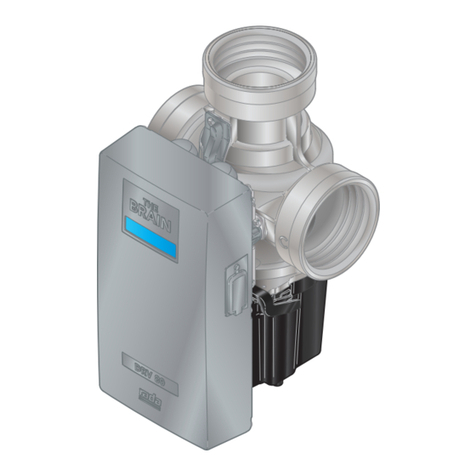
Armstrong
Armstrong The Brain DRV80R manual
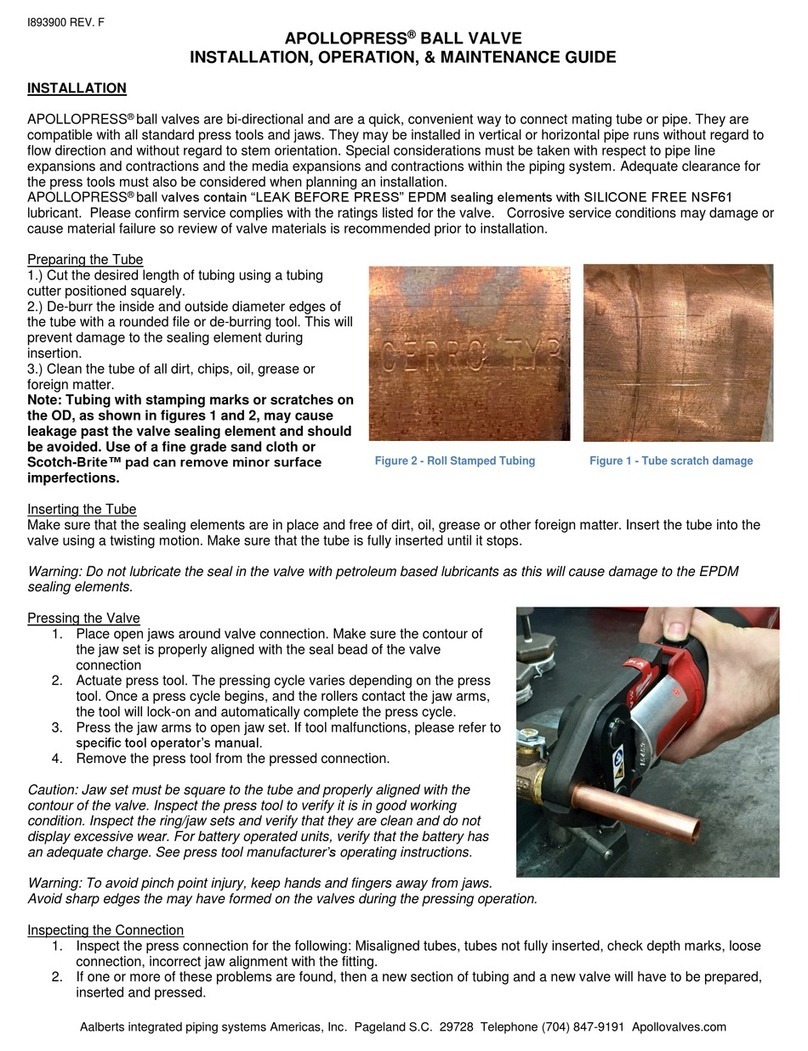
Apollo
Apollo ApolloPress APL77V10711 Installation, operation, maintenance guide
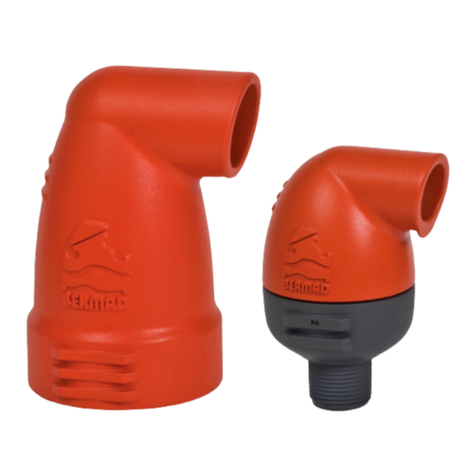
BERMAD
BERMAD K10 Installation, operation and maintenance manual
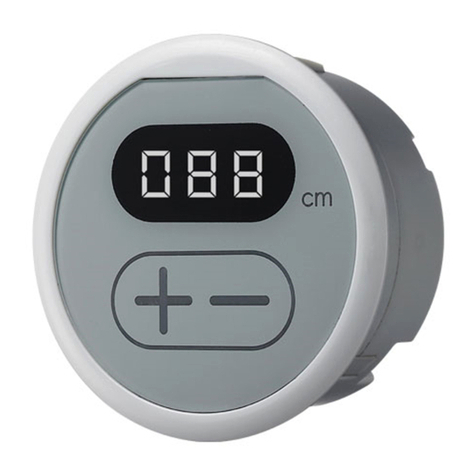
Timotion
Timotion TDH1 user manual

Yamaha
Yamaha disklavier DKC-850 Internet connection guide
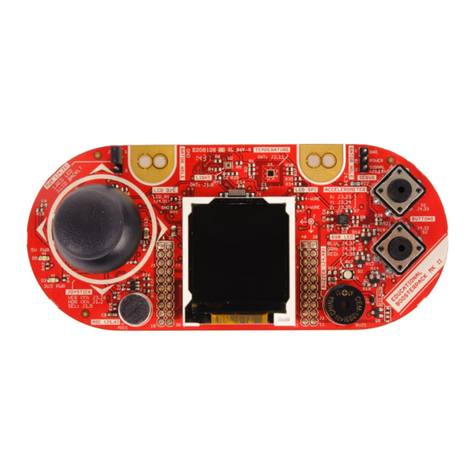
Texas Instruments
Texas Instruments BoosterPack Educational Plug-in Module Mark II... user guide
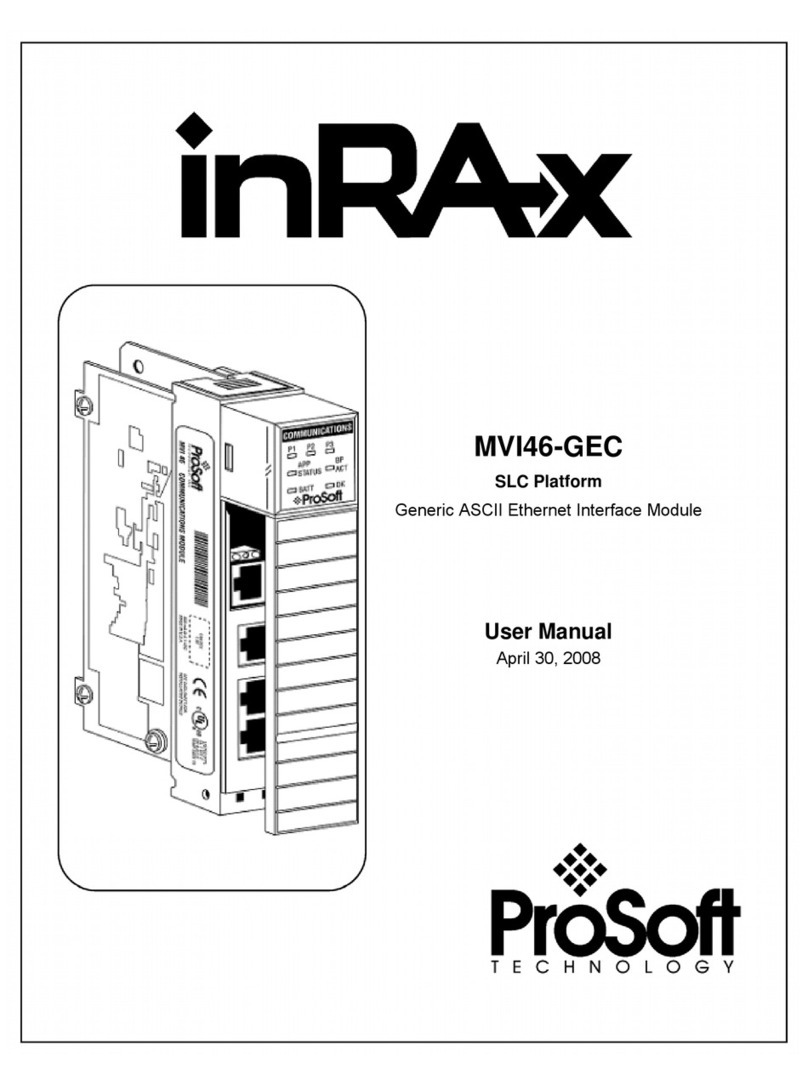
ProSoft Technology
ProSoft Technology inRAx MVI46-GEC user manual

Kyocera
Kyocera 200 Data book
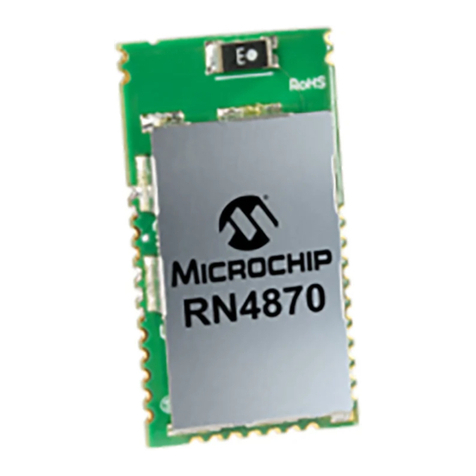
Microchip Technology
Microchip Technology RN4870/71 manual

M-system
M-system R3-NEIP1 instruction manual
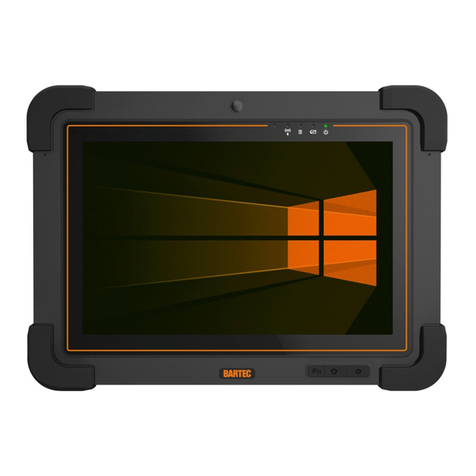
Bartec
Bartec 17-A1Z0-0005 Installation instruction


